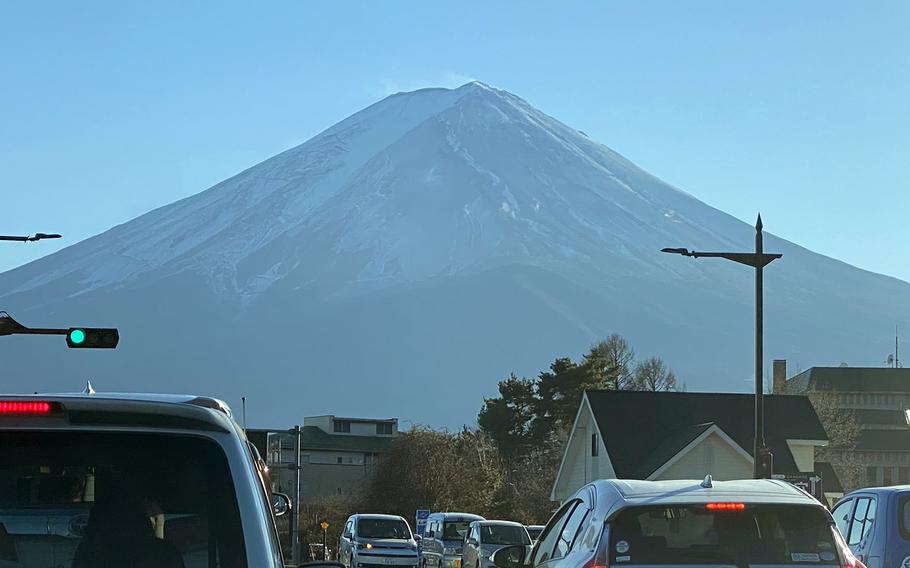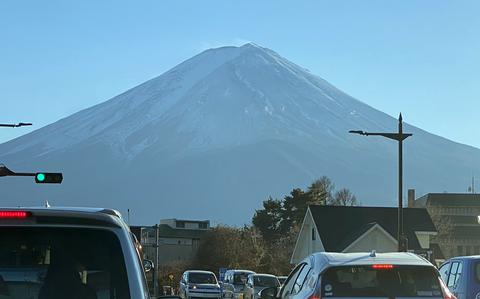
Mount Fuji, Japan’s tallest mountain and an active volcano, sits less than 62 miles from central Tokyo. (Aaron Kidd/Stars and Stripes)
TOKYO — The Tokyo Metropolitan Government has laid out detailed procedures to follow in the event of a volcanic eruption near the capital, including specific steps to deal with ash from Mount Fuji.
The metro government this year revised guidelines issued in 2023 to address the threat of major eruptions near Tokyo. The updated plan focuses on volcanic ashfall in the city and covers potential eruptions on remote islands under Tokyo’s jurisdiction.
Mount Fuji — Japan’s tallest mountain and an active volcano — sits less than 62 miles from central Tokyo. The closest point is about 29 miles from Hinohara village on the city’s western edge, and about 59 miles from Shinjuku, home to the metro government offices.
Fuji last erupted more than 300 years ago. There is no immediate sign of an eruption, but officials said preparations are necessary because it could occur at any time.
“In the worst case scenario, if Mount Fuji were to erupt, large amounts of ash would fall over a wide area, even within Tokyo, causing disruption to roads and other transportation networks, power outages, and other damage that would directly paralyze the capital’s functions, and could have a major impact on socio-economic activity,” the revised document states.
The guideline notes that while lava or pyroclastic flows are unlikely to reach the capital, ash could cause widespread damage if carried by winds from the southwest. In the worst case, accumulations of up to 4 inches are expected in Hachioji and parts of Machida, with 0.75 inches to 4 inches across much of the rest of Tokyo.
Hachioji is less than 8 miles from Yokota Air Base, home of U.S. Forces Japan. Machida is about 6 miles from Camp Zama, headquarters of U.S. Army Japan.
Ash is expected to damage transportation, utilities, businesses, buildings and residents’ health, according to the plan. Vehicles could become immobilized with as little as 1.2 inches of wet ash or 4 inches of dry ash.
The guideline includes a priority map for clearing roads to maintain supply routes, focusing on major expressways such as the Tomei and Chuo, and national routes, including Route 16, which connects U.S. military bases in and around Tokyo.
“In the event of ashfall, it is expected that roads will need to be cleared over a wide area of Tokyo. Therefore, in order to ensure rapid road clearance, priority access points and the roads connecting them are designated,” the guideline states.
Evacuation rules are also detailed. The plan asks residents to remain at home unless they are cut off from essential services or supplies.
Evacuation is recommended if ash depth reaches 12 inches, when building collapse becomes a risk. Residents may choose to evacuate sooner if accumulations of 1 to 12 inches cut off electricity, water or gas.
The metro government also signed agreements with private companies to secure vehicles for ash removal.


AloJapan.com